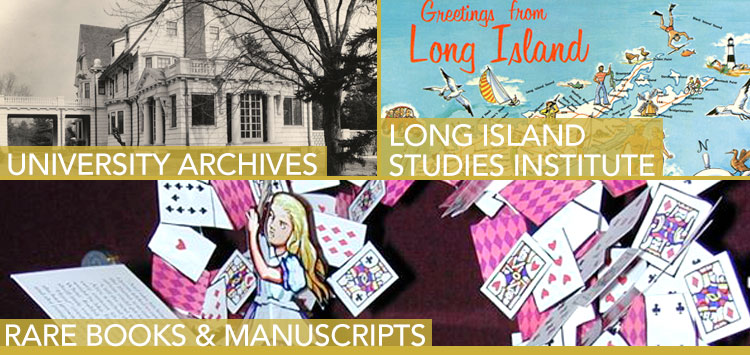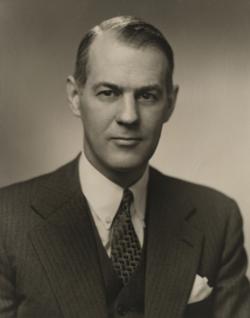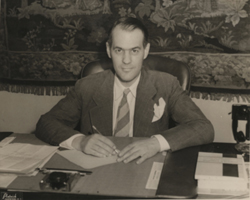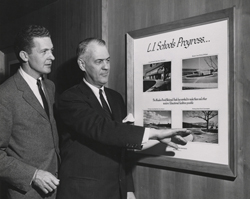John Cranford Adams
October 11, 1903 - November 24, 1986
Served as Hofstra’s President from 1944 - 1964
“Now at long last the tide has ceased to ebb and begins to flow strongly in the direction of peace. To this small campus 25 veterans have already returned…. Very well! This is the moment we have all been waiting for. Let us take stock of what we have and what it is we must do.”
– J.C. Adams
Speech, May 16, 1945, at installation ceremony
“A year ago I sent you the good news that Hofstra had been selected….to receive the first round of Ford Foundation ‘Challenge Grants’. This recognition was a feather in Hofstra’s cap—the only institution chosen in the New York, New Jersey, Connecticut, and Rhode Island area—for it followed a searching examination of Hofstra’s last ten years of growth and educational leadership, together with ten years of future planning implemented by firm figures and realistic goals. In part the grant was an award for achievement.”
– J.C. Adams
In a letter dated May 3, 1963
Contact Information
Click to Play Audio from Oral History Interview
conducted on June 8, 1978
Transcript of Audio
Mr. Calkins had become the first President on its individual basis, apart from NYU. There was the interim then of a year when Mr. Brower was acting President, and then there was a decision either to close the University or go ahead and the Commissioner of Education, urged that the college go ahead. And he was of course tremendously; he was quite right in his forecast.
Shakespeare had been my particular subject in days when I thought myself a scholar and I had written a book on the nature of Shakespeare’s playhouse, the Globe and it took about ten years to do the research for it and another eight years to write it. And then when it was published, I started to make a model with the idea that photographs and what my views were in the nature of a building would reveal that building to the reader very much better than the text itself. They all said, “Look, before you send that down to the Folger Library where you promised it, let’s have a show of it at Hofstra.” And so we set up the idea and proposed that in the spring of production of a Shakespeare play a company, the exhibition of this model and we had dozens of great speakers over the series of years where the symposium was part of the celebration of the Shakespeare festival. Newspapers picked this up and for the first time Hofstra was now a matter of national record. I have a scrapbook with something like I think it’s 160 different newspaper clippings from around the country about the Hofstra festival, about the model and the rest.
The famous GI bulge, which brought back to Hofstra prosperity, students galore, the best students one could possibly ask for, serious, devoted, eager, attentive, ambitious so we devised a program of ROTC. It was very popular at the start. It had several things going for it: it gave every student in the Hofstra book an income that otherwise you would not have had; it gave him a priority in case the Korean War should call for mobilization a priority on rank and privilege; and for ten years we not only were the largest single unit of ROTC but had also the distinction of being the best by the rating. We never got less than the top rating from the government.
For the first ten years of my being at Hofstra, there was no rivalry from Adelphi whatsoever. And we thought of it as a place which as it were a benchmark, showing how rapidly we could go ahead, if only by comparing it how far behind we were leaving Adelphi. You’ll find, naturally, in these matters I an entirely biased.
The college as it arose from nowhere into considerable distinction in a relatively short period of years, which enabled the Middle States Association team to say, “Whatever it is that Hofstra attempts to do, it does well!” Or to have the then Herald Tribute say that the accomplishments of Hofstra’s first thirty years suggest, if similar accomplishments can be attained in the next thirty years it’ll be among the leading universities of the east, if not the country.




